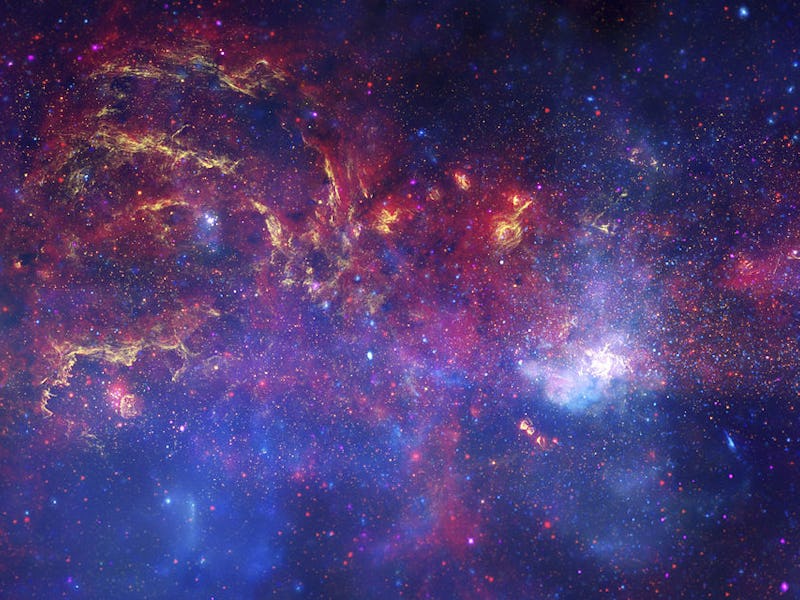This Map of the Milky Way Reveals Secrets Hidden in the Heart of Our Galaxy

When you think “galaxy maps,” it’s hard not to picture extremely detailed holograms seen in films like Prometheus. Instead of guiding space explorers through the Milky Way, astronomers are using a newly-created galactic map to find answers to the mysteries our galaxy holds right from Earth.
An international team of researchers has created an age-map of the central region of the Milky Way, known as the bulge. This interstellar atlas revealed that three sections of the heart of our galaxy were created over a period of 4 billion years. This means stars found in these areas might be older than previously estimated.
Join our private Dope Space Pics group on Facebook for more strange wonder.
The results of this study will be presented at the European Week of Astronomy and Space Science (EWASS) in Liverpool by Marian Rejkuba, of the European Southern Observatory, on April 3.
This is the infrared map constructed from the VISTA Variables in the Via Lactea (VVV) survey of the inner Milky Way showing the three areas studied.
The group examined the light data from millions of stars in an attempt to identify their composition, which can be used to denote their age. This study was made possible by readings of the bulge gathered by the ESO’s Visible and Infrared Survey Telescope for Astronomy and Very Large Telescope, in Chile.
“We analyzed the color and brightness of stars to find those that have just reached the point of exhausting their hydrogen fuel-burning in the core, which is a sensitive age indicator,” says Rejkuba in a statement. “Our findings were not consistent with a purely old Milky Way bulge, but require star formation lasting around 4 billion years and starting around 11 billion years ago. The youngest stars that we see are at least 7 billion years old, which is older than some previous studies had suggested.”
This is one of the three boxes studied, showing a superposition of almost 3 million stars belonging to different Milky Way structures along the line of sight: the Milky Way disk, as well as the stars belonging to the bulge region.
Previous studies have been able to identify the two types of stars that make up the bulge: metal-rich stars and metal-poor stars. While scientists were able to agree on that much, analyses on how old these stars were produced conflicting results. The ESO’s findings were consistent across the three sections of the bulge they observed, suggesting a certain level of accuracy.
The team intends to plot a final version of the map that will display the speed at which the star formations in the center of the Milky Way formed. A next step that co-lead author of the study, Elena Valenti says, “will be an important ingredient in telling the complete story of the formation of the Milky Way bulge.”
Hopefully, they’ll be able to create some holograms to accompany these charts so us space geeks can feel a little more like Michael Fassbender discovering the Orrery for the first time.